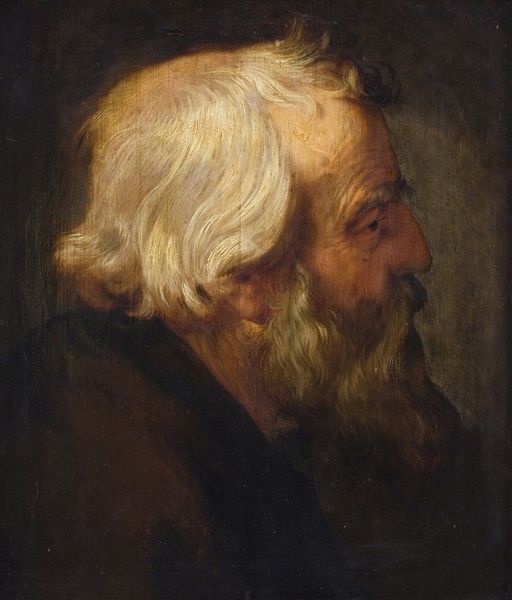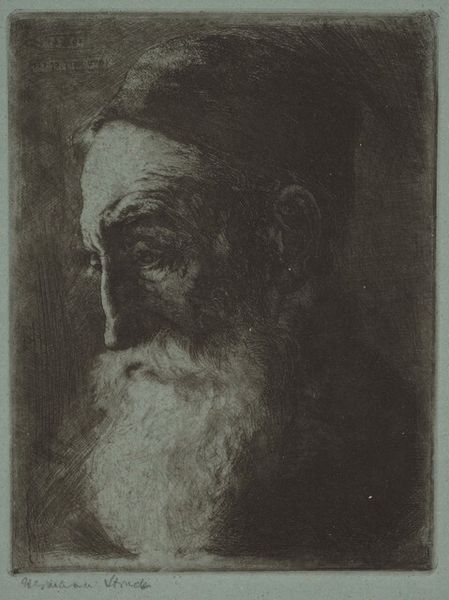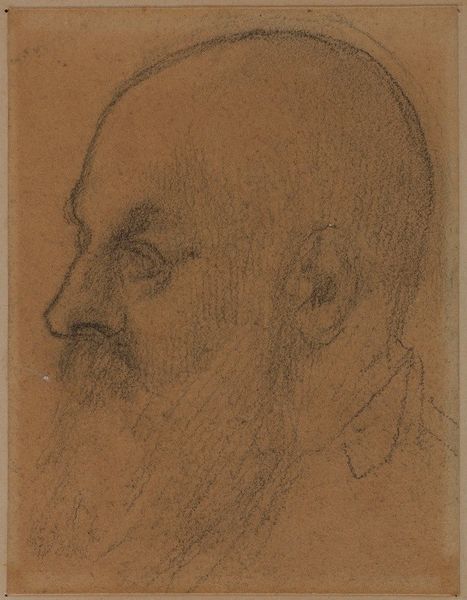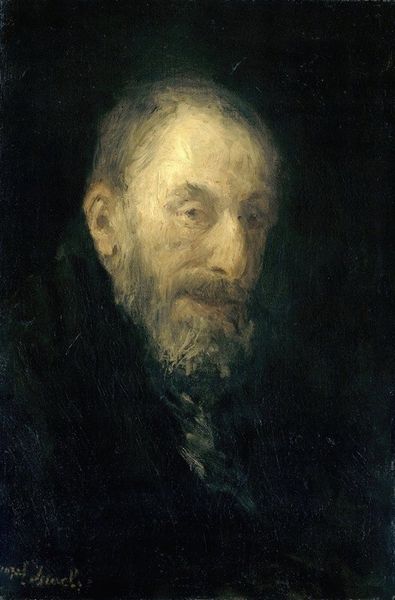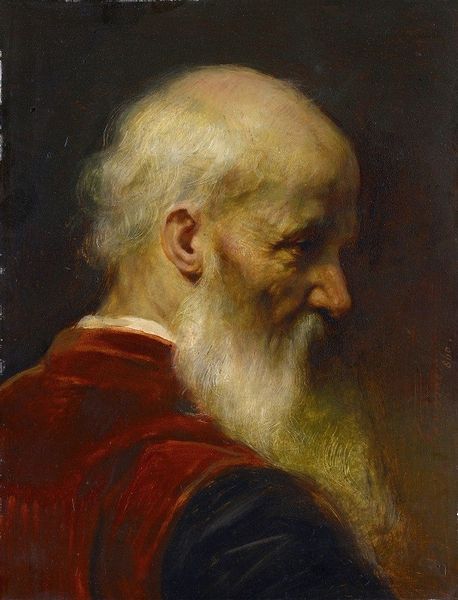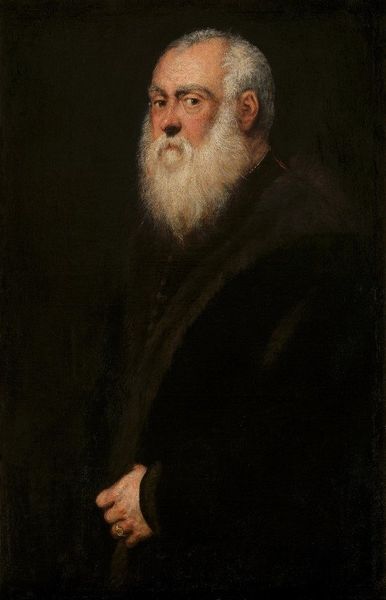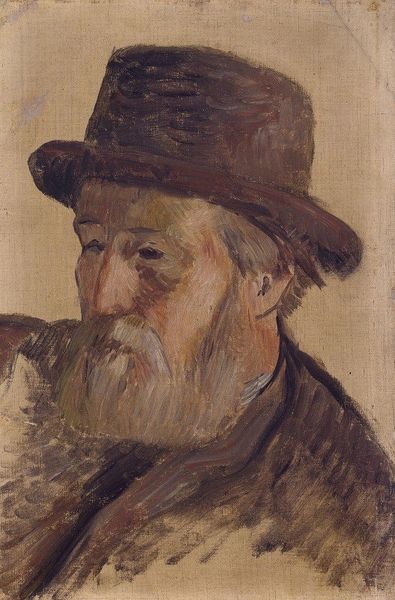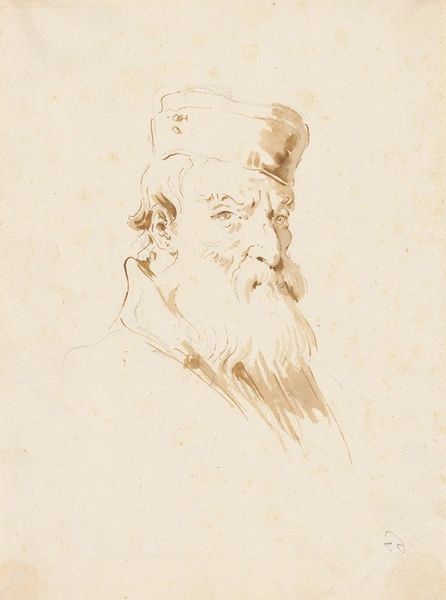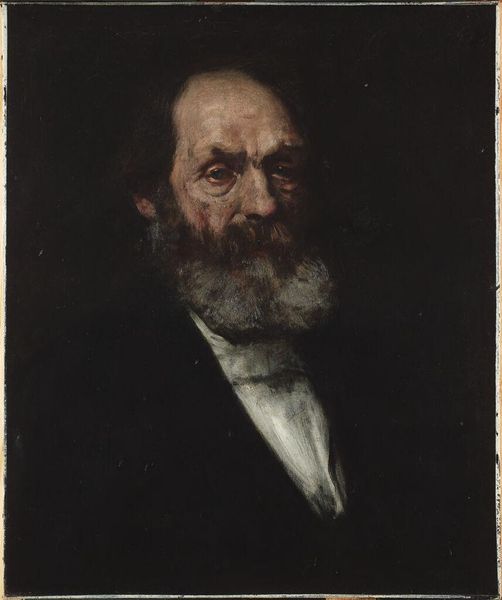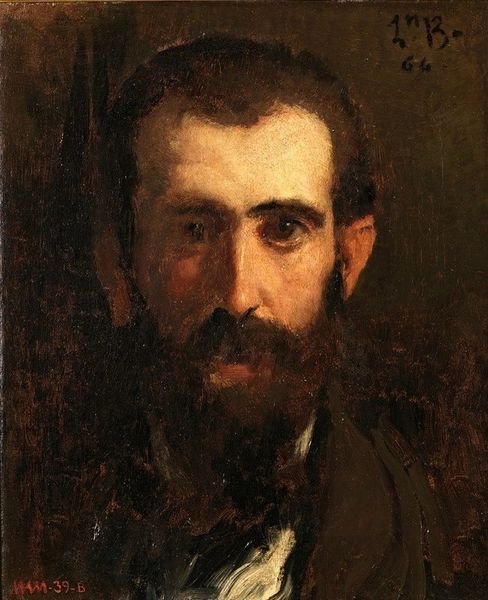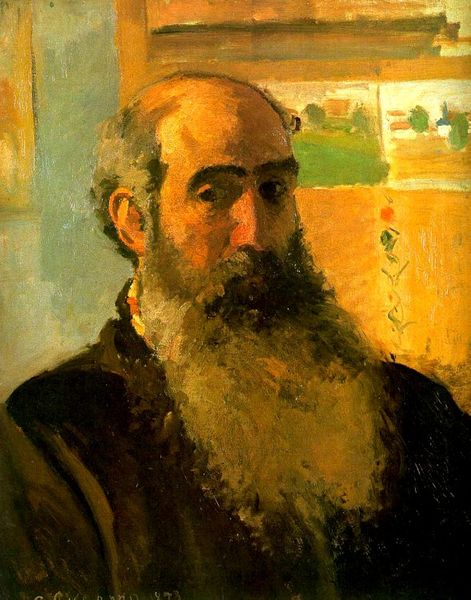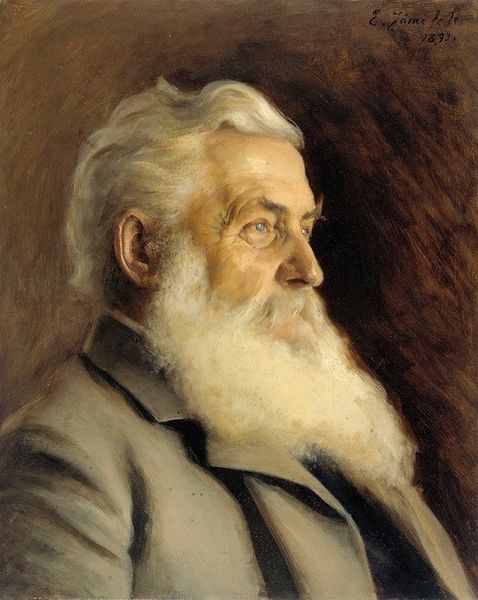
Copyright: Public Domain: Artvee
Editor: This is Ladislav Mednyánszky's "Painter’s Father Profile with Pince-nez," painted between 1890 and 1895. It’s an oil painting, and what strikes me first is its intimacy and the somewhat melancholic air around the sitter. What can you tell me about it? Curator: Indeed. The profile itself is a powerful symbol, isn't it? A side view, almost withholding. The pince-nez, those old-fashioned eyeglasses, speak volumes, too. They suggest intellect, but also a certain fragility, a need to perceive the world more clearly. The soft brushstrokes, reminiscent of Impressionism, enhance that feeling, blurring the lines and perhaps alluding to fading memory. Editor: Fading memory…that's interesting. It gives such a vulnerable feeling to the piece. How does that symbolism tie into the painting’s historical context? Curator: Think of the late 19th century - a time of great upheaval, of scientific advancements clashing with older traditions. The father, presented in this gentle, almost fading light, embodies a generation grappling with these changes. The muted palette adds to this, evoking a sense of nostalgia, perhaps even loss. Do you see how the light seems to be receding around him? Editor: I do now! It's like the figure is emerging from the shadows, or perhaps retreating into them. What I initially read as melancholic, I see is also pensive. Curator: Precisely! The power of art lies in its layered meanings. It invites us to reflect on our own perceptions and emotional responses shaped by memory and the passage of time. The work reminds us how visual cues help the image carry an emotional weight, transcending time. Editor: I hadn’t considered all those symbolic elements at first glance. Seeing them all come together gives me so much more appreciation for the painting's complexity!
Comments
No comments
Be the first to comment and join the conversation on the ultimate creative platform.
